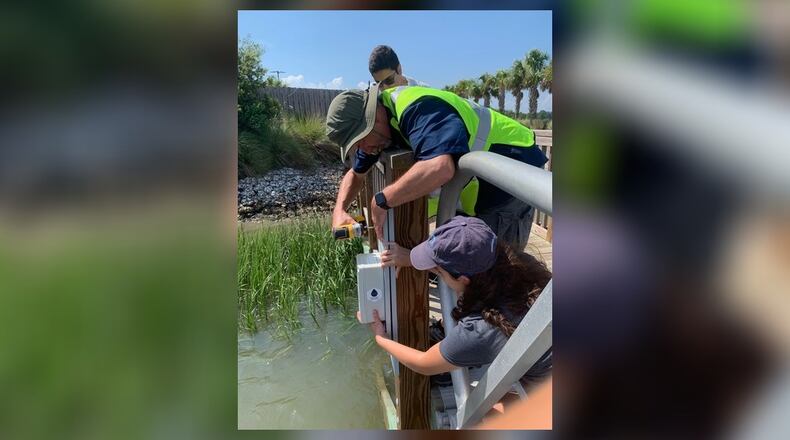Students at Jenkins High School in Savannah are building a new system that will help their community cope with flood patterns that have changed with the rise in global temperatures.
Teenagers in the school's engineering class are building water level sensors that can produce data for rescuers and residents. While others protest government policy or argue about whether climate change is real, they are taking a hands-on approach.
"There are so many speculations and we want to make sure we're doing something right now," said Udai Mallepoola, 17. He and more than two dozen students are part of a project established by Georgia Tech academics and local officials.
The goals: establish an early warning system for floods and build a database that informs long-term planning.
Tech computing research scientist Russell Clark has a house in an old coastal neighborhood that used to be sheltered from storm surges. That changed in 2016 when Hurricane Matthew pushed water across a protective marsh. There was no property damage then, but the next year Hurricane Irma flooded several homes, and damaged Clark’s.
He knew about climate change when he moved into the house 15 years ago, but it seemed like a distant threat. “It’s definitely gone from, ‘Oh, that’s going to be my kids’ or grandkids’ problem,’ to, ‘Oh, this is going to be in my lifetime,’ ” he said.
Clark teamed up with Tech professor Kim Cobb, an oceanographer. Residents’ instincts about ocean behavior are becoming less useful as the globe warms, Cobb said. Stronger storms are interacting with tides, rainfall, wind and topography in new and unexpected ways.
“This is a dynamic system, and when those communities lived through events like Matthew and Irma, they learned that lesson,” Cobb said. “The storms that you could wait out before, you can’t wait out this time.”
The one government flood gauge for the entire coast produces limited data.
This led to a community meeting attended by Jenkins High engineering teacher Tom Maty. He volunteered his students to build ultrasonic water level sensors designed by Clark and his Tech colleagues.
“I tried to sell it pretty well and they kind of bought into it,” Maty said of his students. Underclassmen soldered and assembled while seniors managed the process and tweaked the design, making the sensors more compact.
Tech also partnered with the City of Savannah and the Chatham Emergency Management Agency, and plans to install about 60 of the sensors on bridges and docks. With half in place already, the emergency officials hope to use the live data to deploy equipment and personnel to the areas most likely to need help during the next hurricane. Emergency preparedness manager Randall Mathews said the data will, in the longer term, also be used to inform the public about evolving threats to neighborhoods once thought safe.
“There’s a lot that people don’t understand about hurricanes, and those are the kind of people who quickly become isolated and call for help when it’s too late,” he said.
Tech research associate Jayma Koval helped write curriculum for sixth-grade science teachers that incorporates information from the Savannah effort, and is distributing it for free. “It is not a climate change curriculum,” she said, “however it lends itself nicely to talking about climate change.”
Georgia Tech’s Jayma Koval will lead a webinar on Tech’s free sea-level-rise curriculum for sixth grade science teachers in Georgia, at noon on Oct. 15, 17, 22 and 24.
Register for the webinar: https://secoora.org/education-outreach/sea-level-rise-curriculum/
Download the curriculum: https://www.sealevelsensors.org/education/
About the Author
Keep Reading
The Latest
Featured




